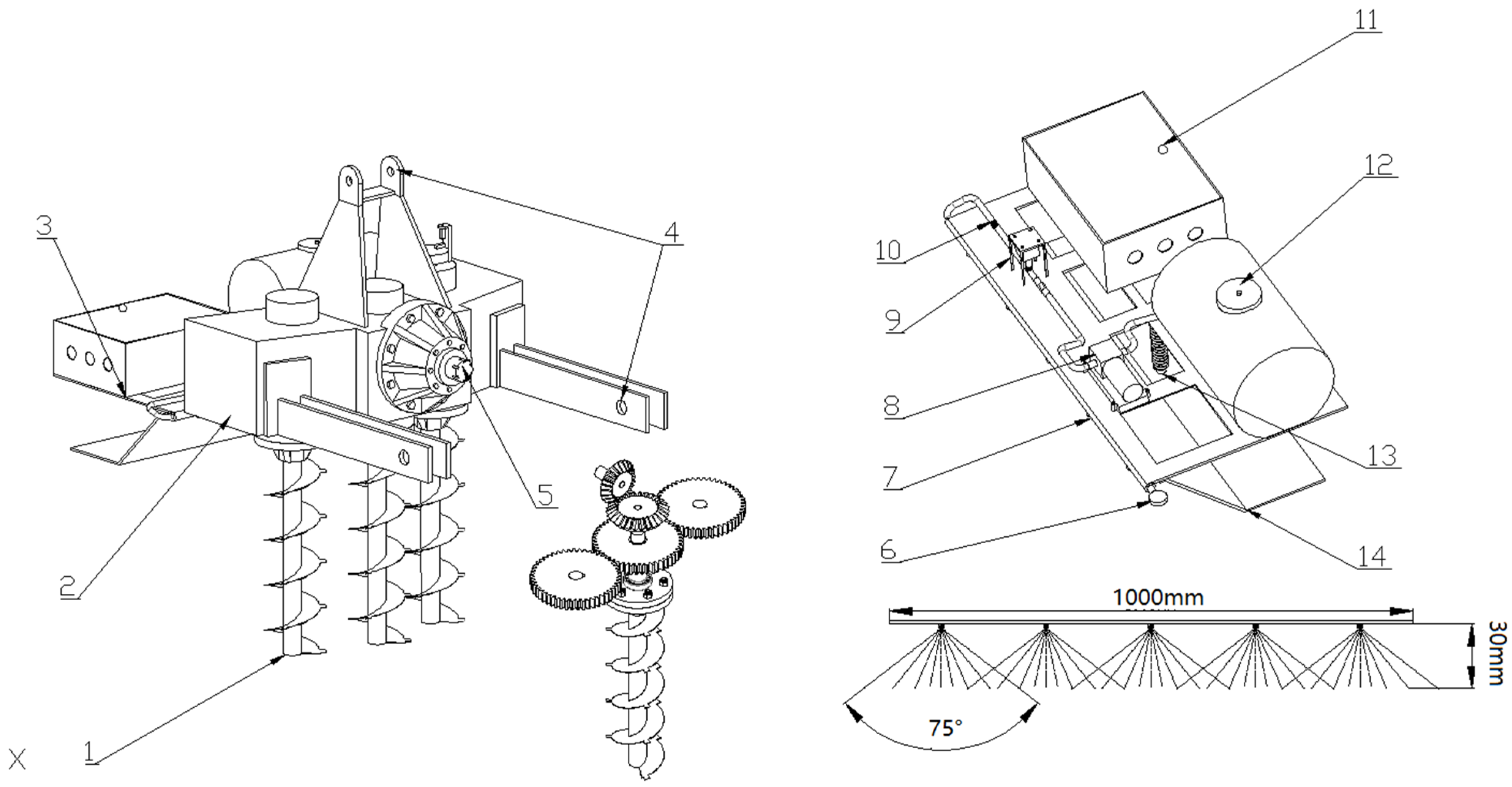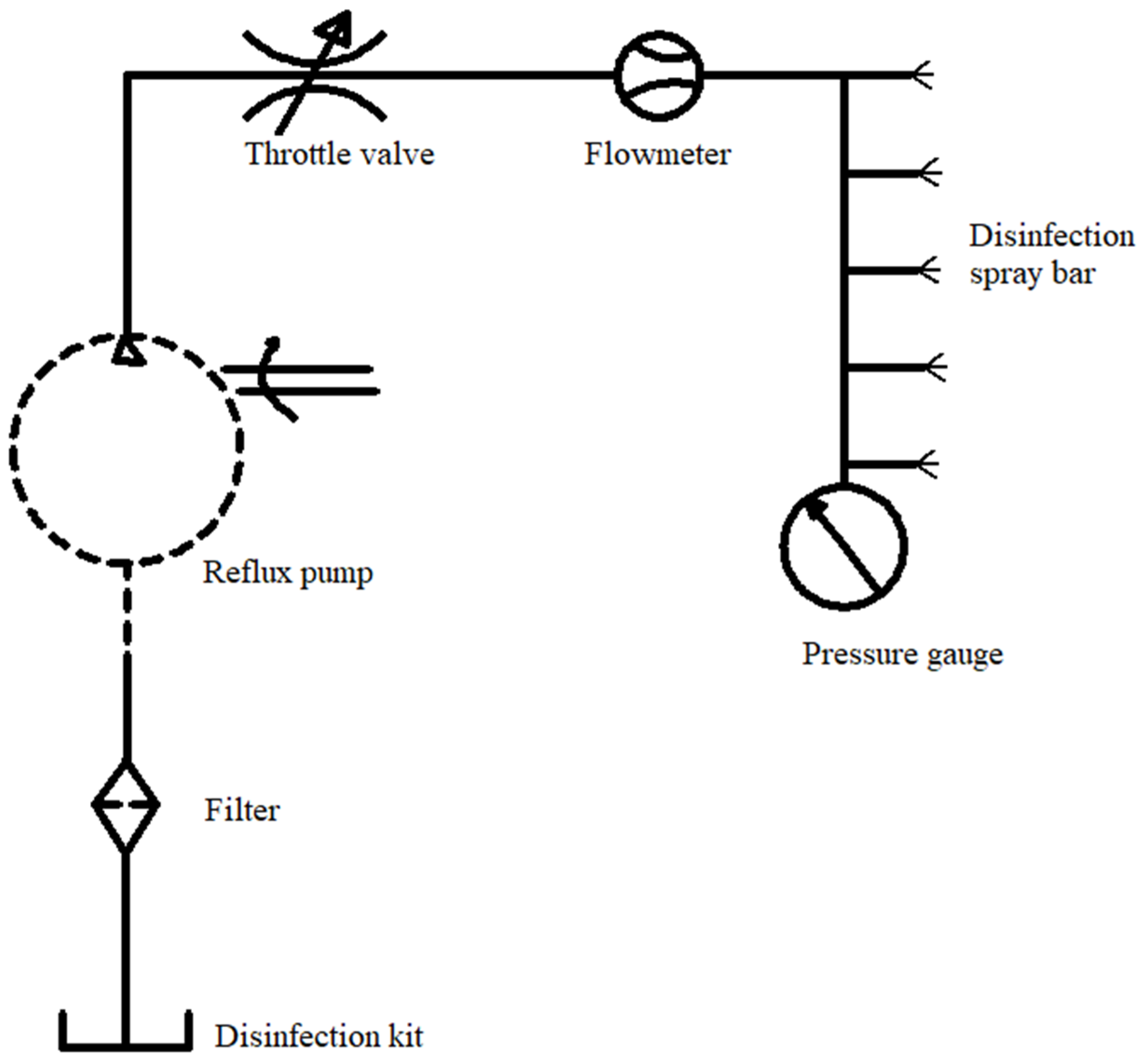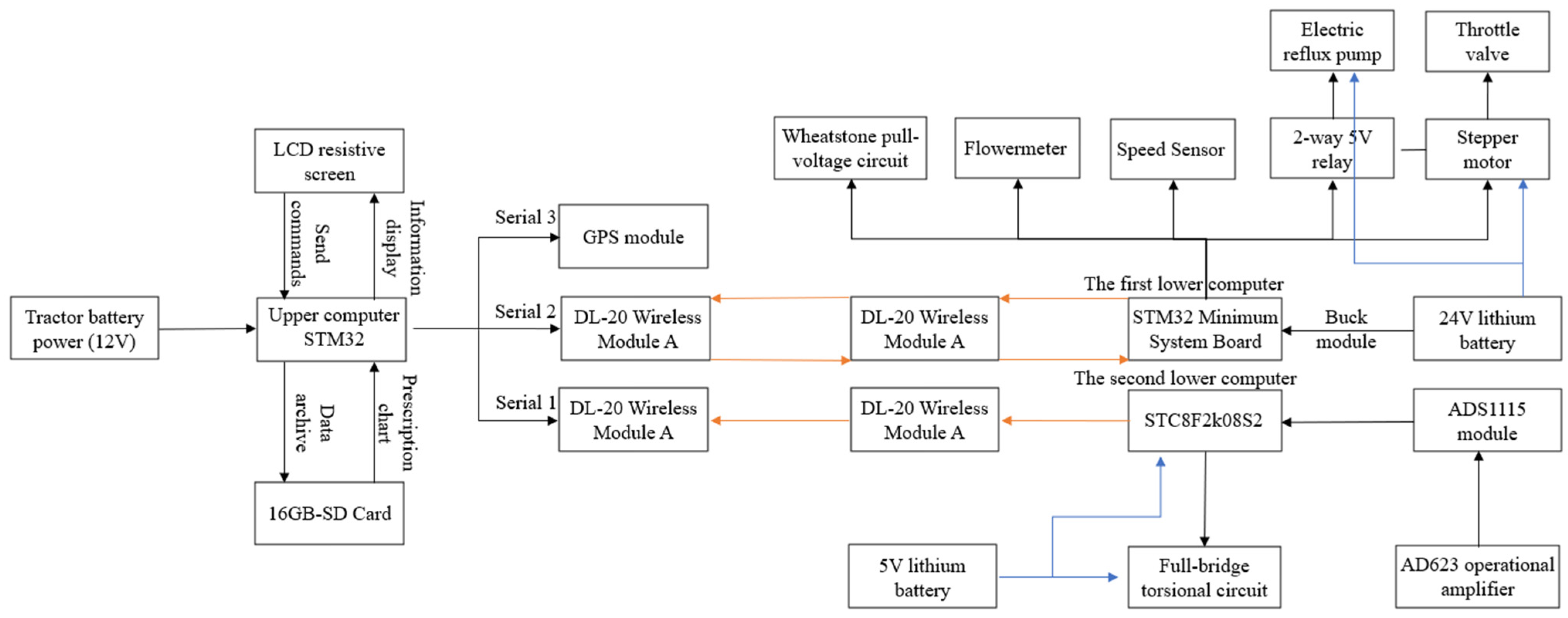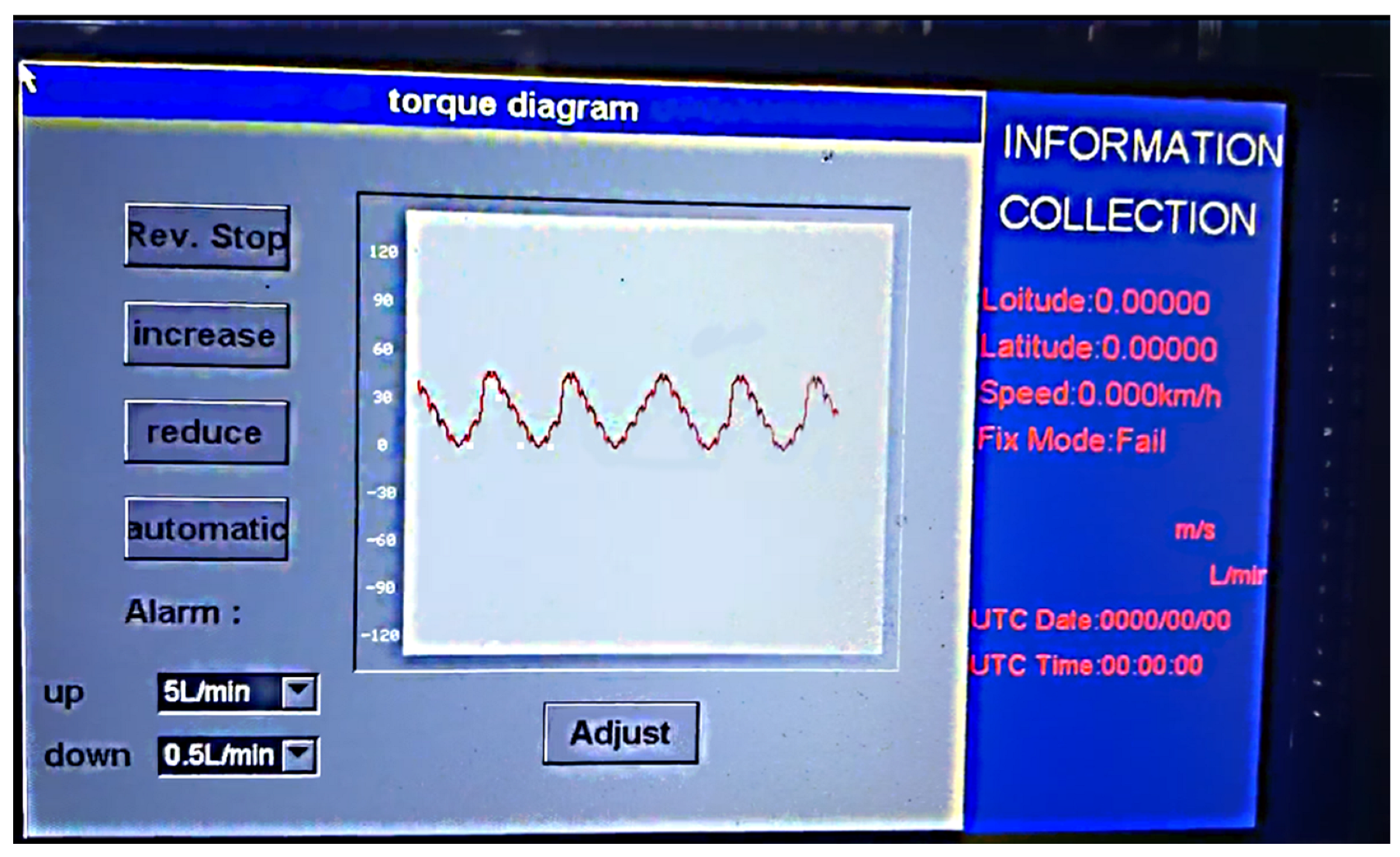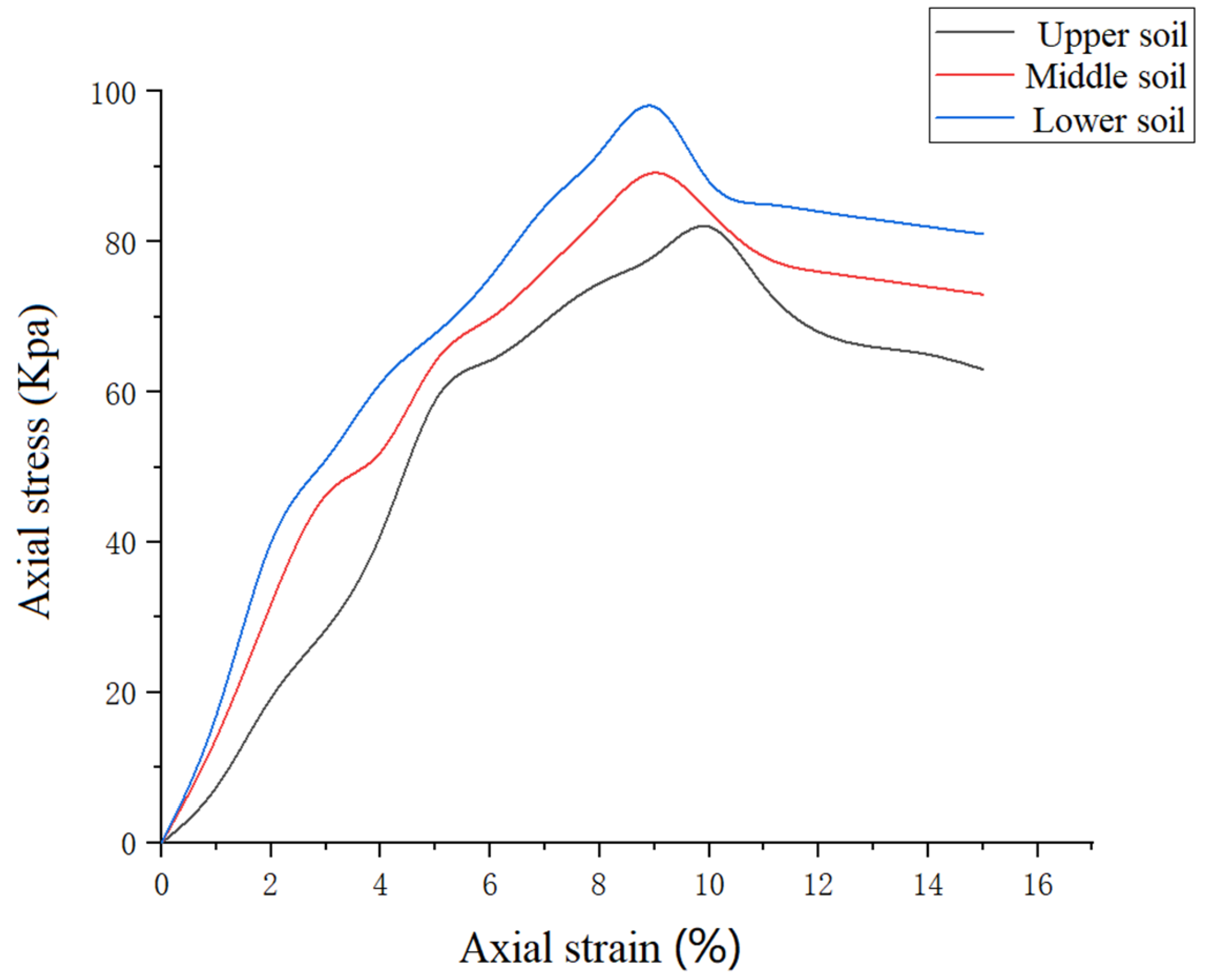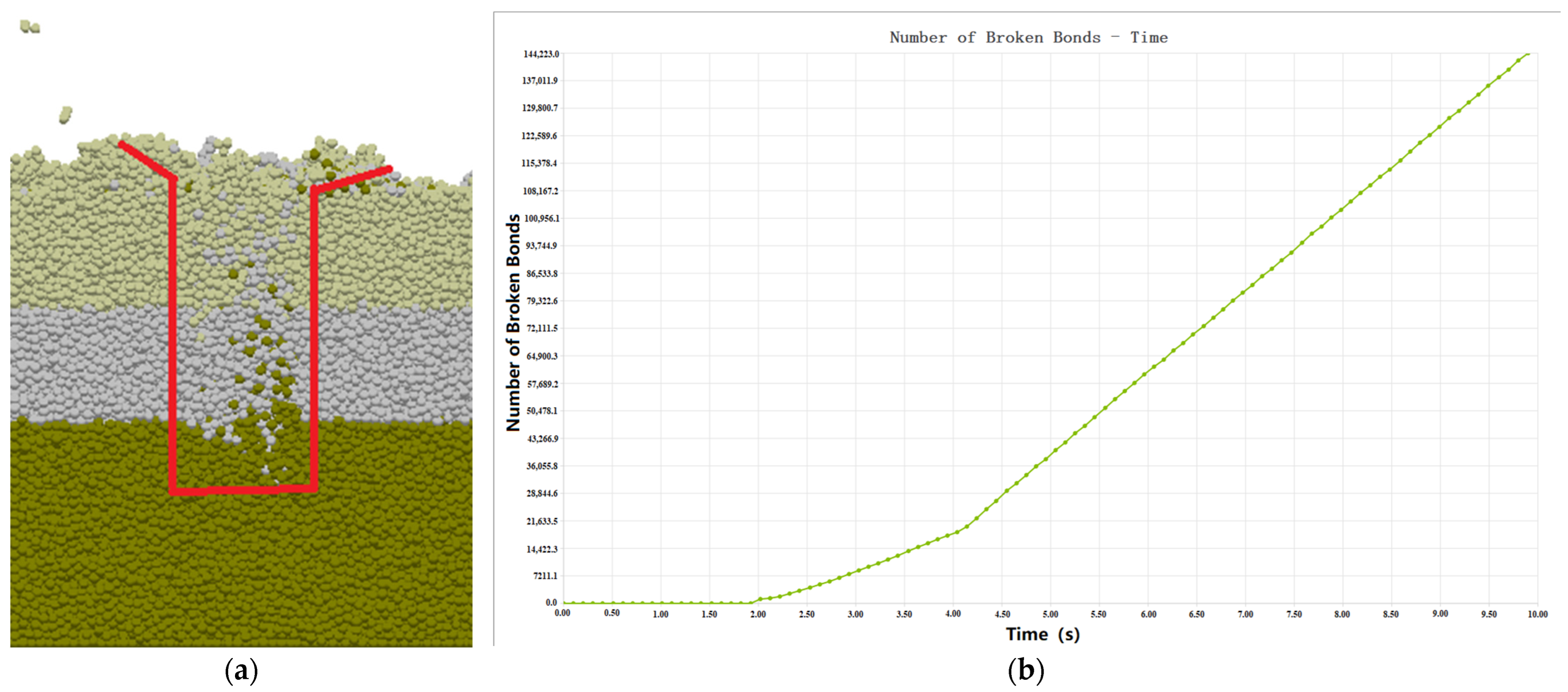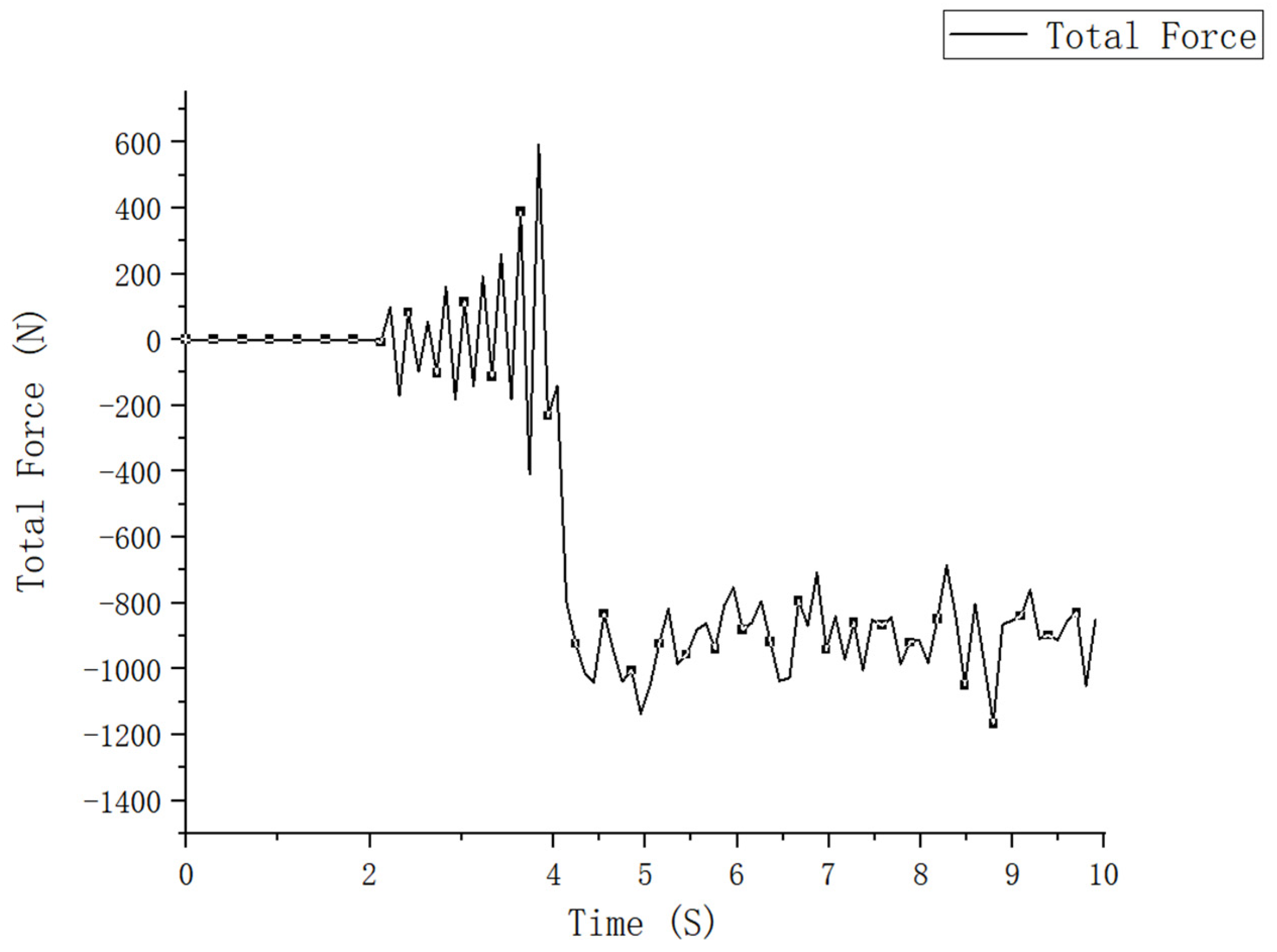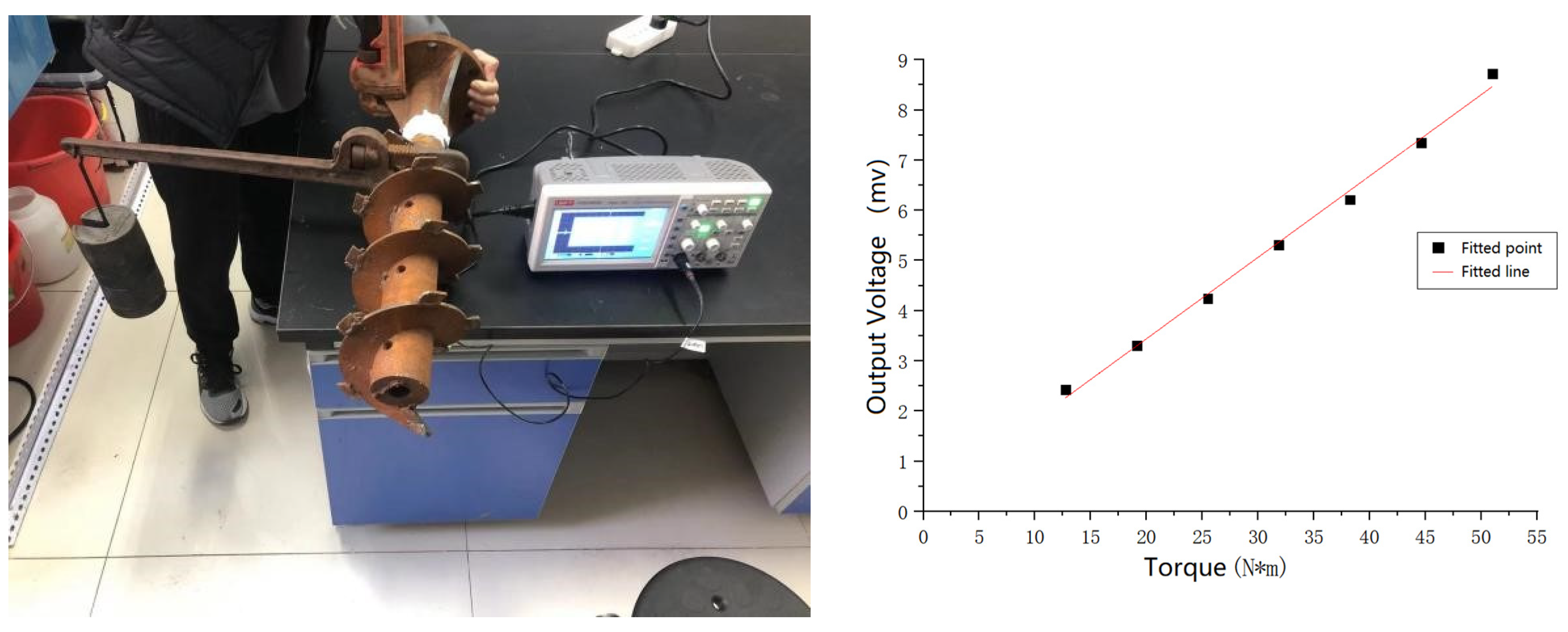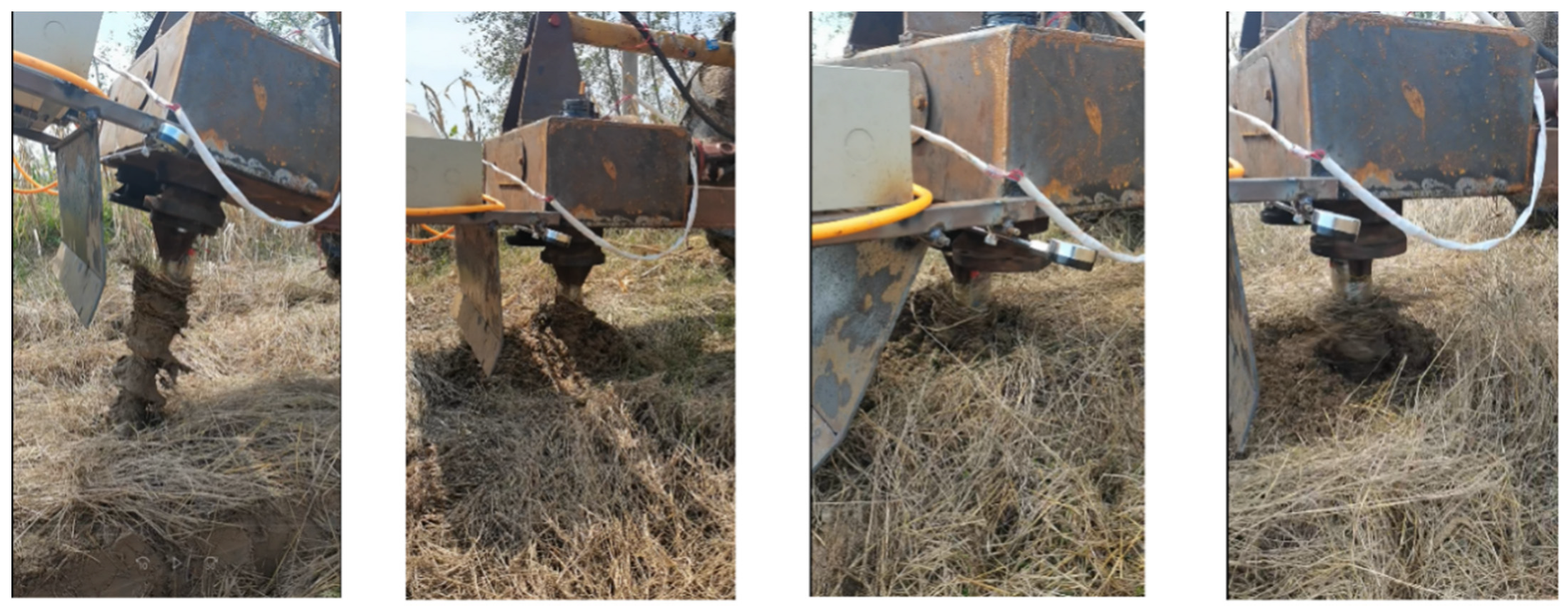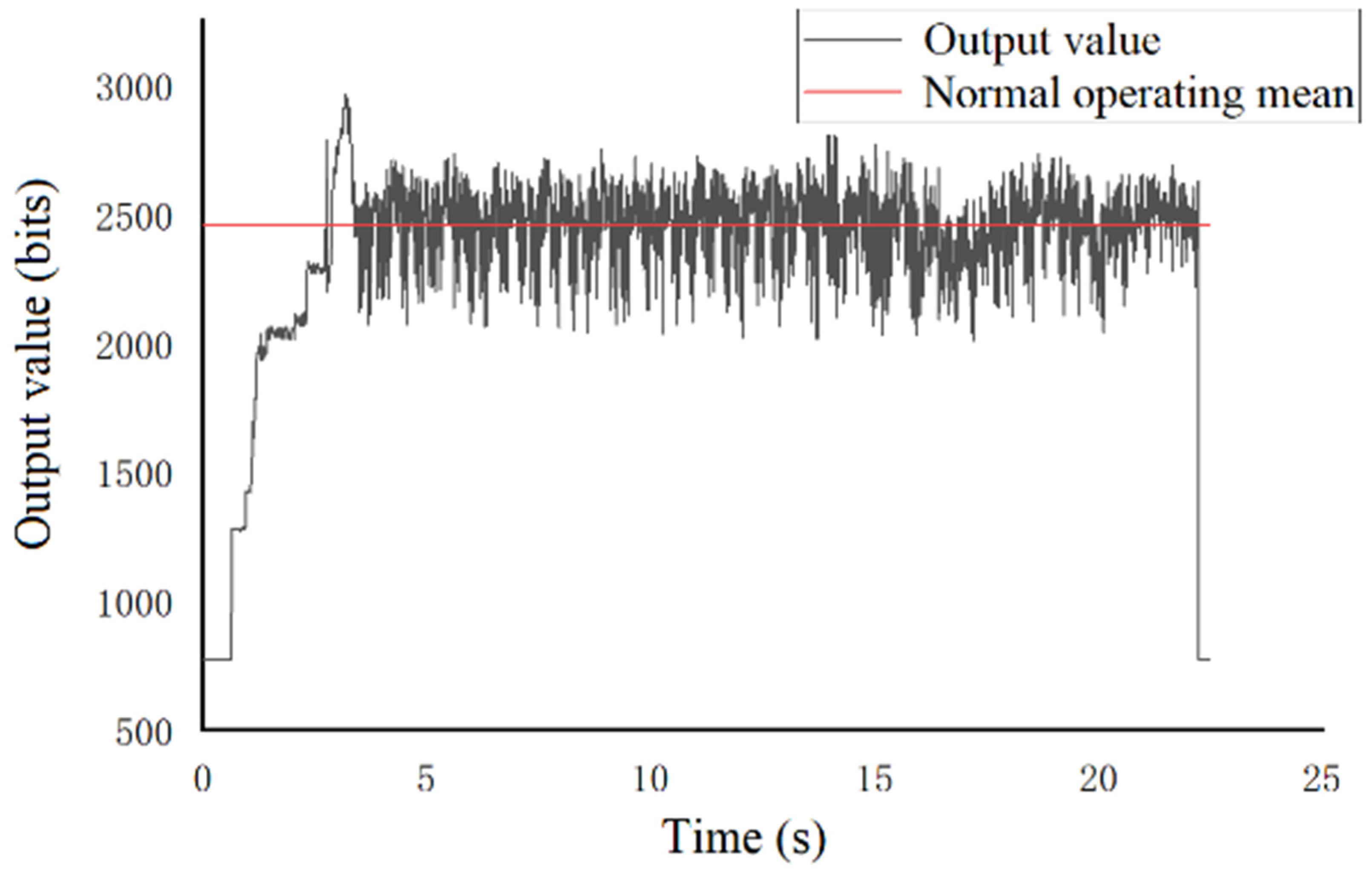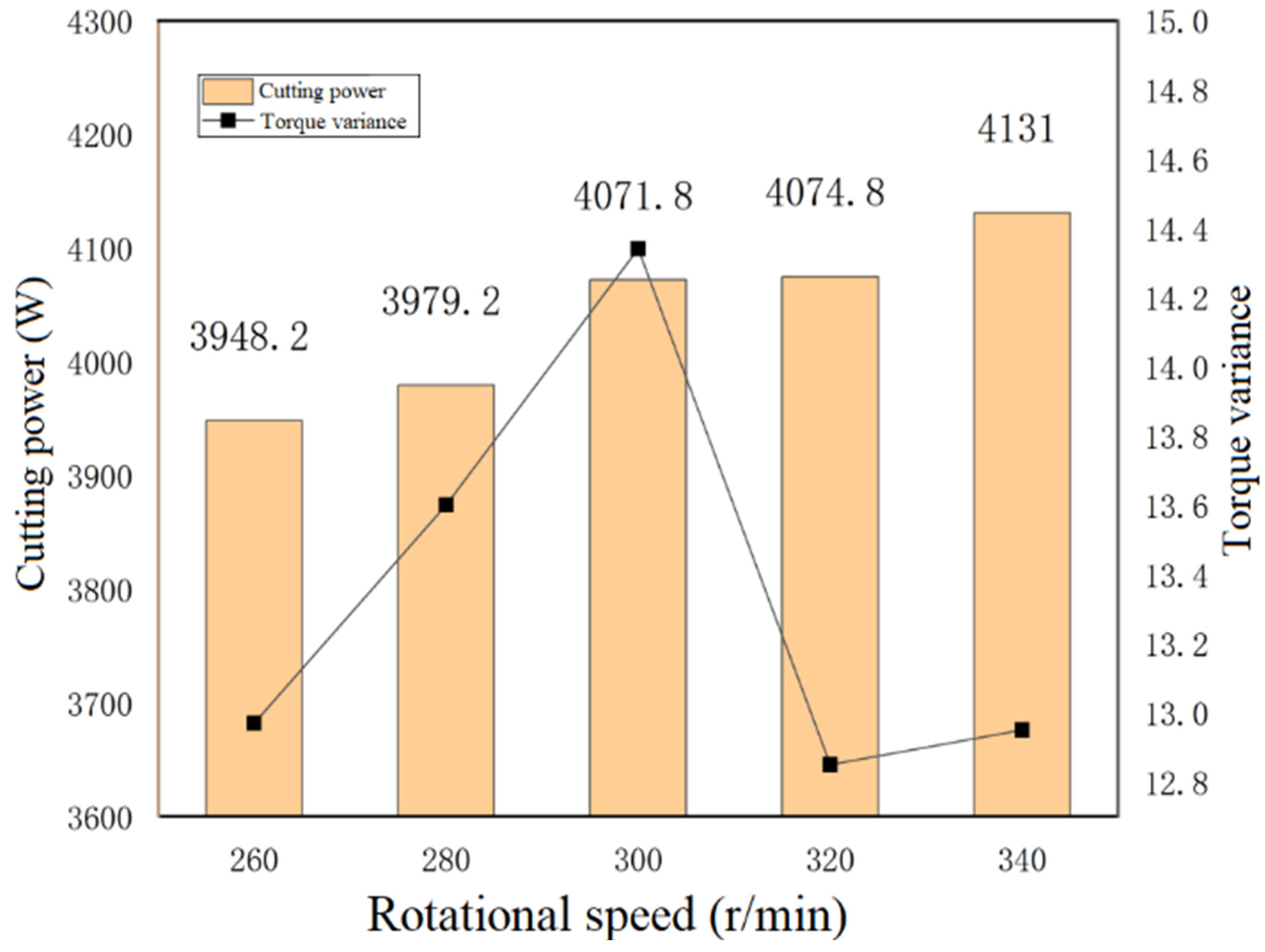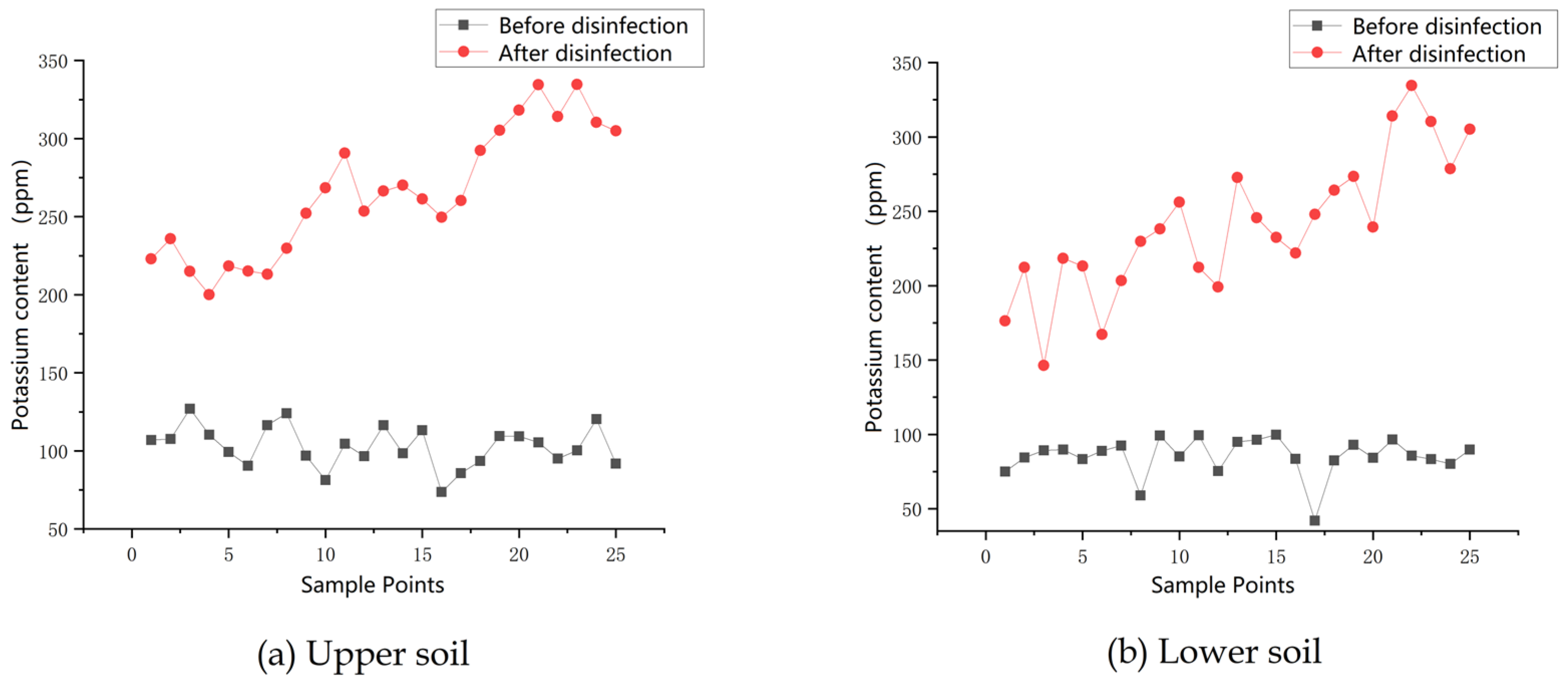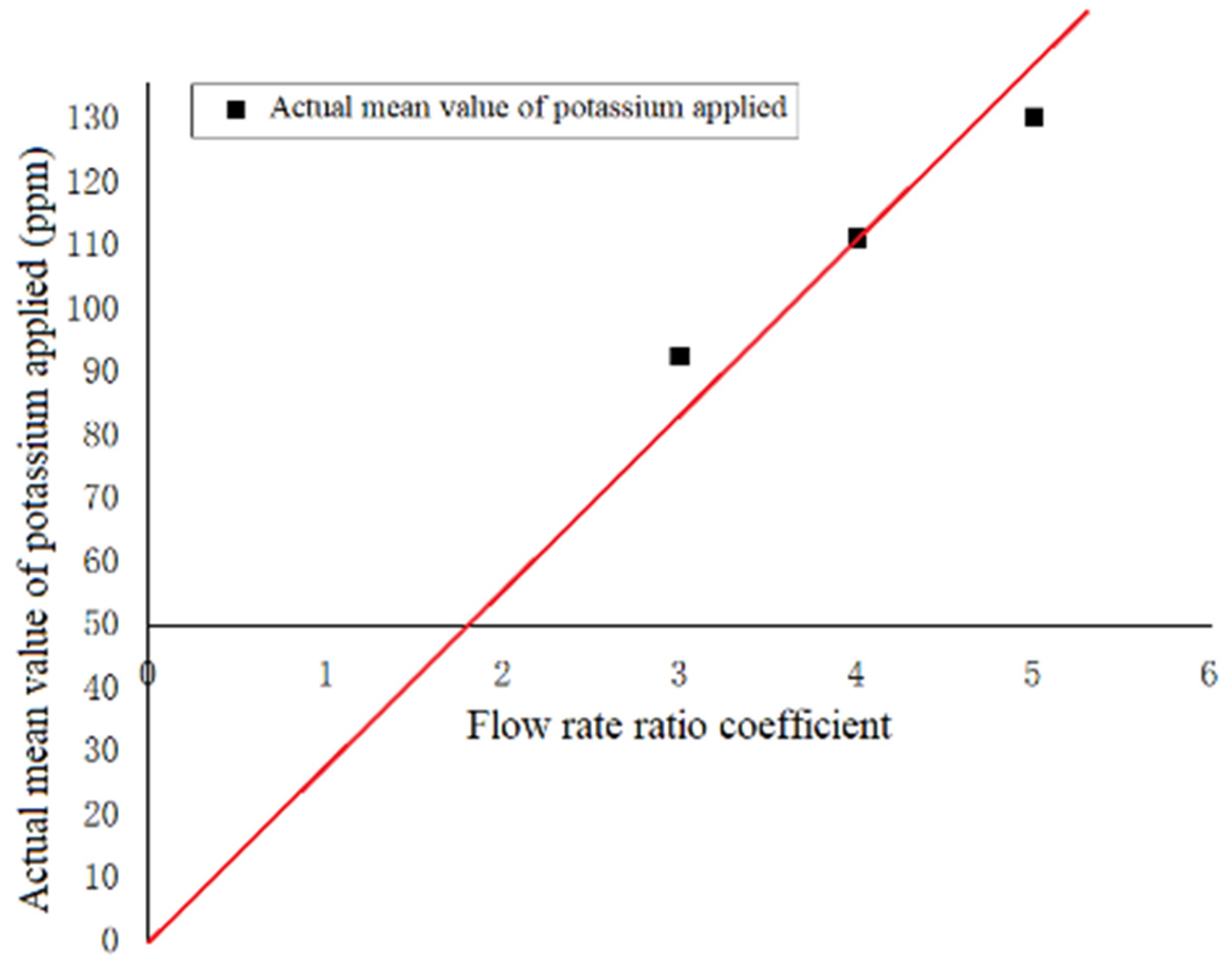1. Introduction
Continuous cropping obstacles refer to the abnormal growth and development of crops caused by the continuous cultivation of the same crop or related crops on the same soil, which leads to the formation of a special soil environment and the breeding of a large number of harmful bacteria. As the scale of agricultural production has expanded and the level of intensification has increased in recent years, the problem of continuous crop disorder has become increasingly prominent, which has seriously restricted the sustainable development of the agriculture [
1,
2]. Since the 1980s, China’s vegetable farming industry has developed rapidly. The area of protected vegetable fields has reached 4.8 million hectares, accounting for 30% of the vegetable area, and 3.7% of the national cultivated area, respectively [
3]. However, because of continuous cropping for many years, protected vegetable fields have had to endure the breeding and spread of pests and diseases, and the content of the soil organic matter has decreased as a result. Long-term shallow rotary tillage cannot be used to solve the problem of continuous cropping, and, instead, a hard plow bottom layer is formed under the crop root system, and the land becomes less permeable to pests. Furthermore, the air permeability of the land becomes poor, the ability to store water and moisture is reduced, the vegetable growth and development is poor, and the efficiency is significantly reduced [
4,
5,
6,
7].
Soil disinfection combined with tillage is an effective solution to continuous cropping obstacles, which can be used to kill most of the virus bacteria in the soil at the same time as cultivation. At present, the vertical spiral blade roll has been widely used in afforestation and reforestation operations due to its reliability and ability to crush soil quickly [
8,
9]. The principle of vertical rotary tillage is precisely based on the use of the mechanical vertical spiral blade roll to grind and suspend the soil naturally, integrating the functions of plowing, harrowing, crushing, and loosening the soil. This technology can be used to improve the soil structure and porosity, keep the soil relatively loose for a long time, break the bottom of the plow, increase the depth of the soil tilth, and improve the physical and chemical properties of the soil [
10]. At the same time, after vertical rotary tillage, the soil environment is conducive to the infiltration of disinfectants and full mixing with the soil. Therefore, developing agricultural machinery with a simple structure and stable operation is important, which integrates vertical rotary tillage and the soil variable disinfection technique.
The Guangxi Academy of Agricultural Sciences put forward the concept of vertical rotary tillage for the first time in 2008, and described the tools and methods that can be used for vertical rotary tillage [
11]. This technology uses vertical spiral blade rolls to complete deep cultivation, and perform high-speed rotary cutting and soil preparation, and leads to the characteristics of an undisturbed soil layer, flat land, and loose soil after tillage [
12]. Yang et al. analyzed the operating performance factors for a vertical rotary tillage blade based on the SPH method in 2019, and established a mathematical model for the structural parameters and power consumption of the blade [
13]. It was found that the range of the power consumption is relatively small when using a small blade roll diameter, a small pitch, and a small number of blade combinations. Xiao et al. proposed a double spiral vertical rotary tillage blade tool structure in 2020 [
14], which can decrease the force amplitude and torque amplitude by 78% and 52.8%, respectively. However, field experiments were not conducted, and the double spiral structure may have the problem of ‘too fast soil rising’.
Soil disinfection technology has attracted the attention of international scholars since the 1980s [
15,
16]. At present, the most commonly used soil disinfection technologies include solar disinfection, steam sterilization, chemical disinfection, and hot water disinfection [
17]. Bourbos et al. developed a solar soil disinfection method in 1993. However, the disinfection cycle for this technology is long, and it cannot be used in continuous cloudy and rainy weather, and cannot achieve uniform disinfection for deep soil [
16]. Nishi et al. and Kita et al. changed the physical and chemical properties of the soil through a hot water disinfection device, but their machines were not able to uniformly disinfect the deep soil layer and had certain requirements for the quality of the steam [
18,
19,
20,
21]. Gay et al. mounted a steam generator and diversion device onto a tracked power machine in 2010 to kill pathogens in the soil through circulation of steam at high temperatures [
22,
23]. Peruzzi et al. developed a self-propelled soil disinfection machine [
24], which sprayed exothermic active substances, and stirred the soil at the same time as rotary tillage. It was found that when the forward speed of the machines is kept at 0.08–0.15 km/h, the soil diseases and pests at a depth of 200 mm can be effectively controlled. Jinok et al. proposed steam disinfection technology [
25,
26], which uses the atomization principle to diffuse high-temperature gases into the soil, and also uses sensor technology to measure and adjust the distance between the spray rod and the soil in real time to improve the uniformity of disinfection. Fanari et al. proposed a soil disinfection scheme based on microwaves that are irradiated from an antenna and is used to kill weed pests and heat up the soil [
27], resulting in a non-linear, multi-physical medium heating phenomenon. Xu et al. designed a Spike-hood soil steam processor [
28], but this machine is generally used in sandy loam soil, and is not suitable for other soil types. Liu et al. developed a combined operation machine for split deep rotary tillage and soil disinfection [
29]. The pesticide and soil were fully mixed by spraying onto the surface and inside of the soil. The cultivation disinfection depth reached 35 cm, the stability coefficient of the cultivation depth was 94.84%, and the disinfection uniformity coefficient reached 64.23%, respectively. Fang et al. designed a solid fumigant disinfector, but their disinfectant could not enter the deeper layers of the soil [
30]. Ma et al. used microwave heating of soil to verify its disinfection effect, but no field trials were conducted [
31].
Based on the above research, it can be inferred that the current soil disinfection machines cannot be used to disinfect and sterilize deep bacteria, and disinfection and sterilization are uneven, while vertical rotary tillage technology can crush the soil deeply, which can promote the penetration of disinfectants and improve the mixing degree of the chemicals and soil, thereby producing a deep uniform disinfection and sterilization. The purpose of this paper was to establish a discrete element soil particle model using EDEM 2018 software, simulate and analyze the process of single blade roll tillage, investigate the influence of different operating parameters on power consumption, and design an on-board control system with STM32 as the control core to achieve the real-time collection of information, such as dust monopoly torque and the variable application of soil disinfection chemicals. The tillage and disinfection performance of the machine was verified through experiments. The objective of this paper was to develop a machine to solve the continuous crop barrier, improve the crop growth environment, and achieve green harvest.
6. Conclusions
In this paper, a vertical rotary tilling-soil variable disinfection combine was designed, simulated, and tested. The study shows that this machine is capable of vertical rotary tillage operation while achieving the variable chemical disinfection agent spraying of the soil. After determining the soil parameters, an accurate discrete element soil particle model was established. A spiral blade roll-soil interaction model was established based on the discrete element method, and the accuracy of the prototype was verified through applying field tests. The results show that the relative error between the actual soil cutting torque and the simulation results under the same motion parameters was 5.97%. The simulation system was also used to conduct orthogonal tests, and the optimal operating parameters were finally selected from the viewpoint of reducing the operating power consumption and improving the operating effect: tillage depth of 500 mm, blade roll speed of 320 r/min, and a forward speed of 0.26 m/s, respectively. A blade roll torque detection system and a variable disinfection system based on STM32 was designed to achieve a variable disinfection operation for the soil through the synergistic cooperation of the GPS and a prescription map with an electronically controlled throttle valve as the main actuating device. The test results show that the uniformity coefficient for disinfection in the upper soil layer reached 85.57%, the disinfection agent can penetrate to a distance of 15 cm below the surface, and the application amount and given flow rate ratio coefficients are basically linear.
In this study, the design of the spiral blade roll was only based on the empirical formula and the existing research base. The parameters, such as the spiral lift angle of the blade roll have an important influence on the power consumption of the machine, as well as the operation quality. In future research, we will use discrete element software to perform soil cutting simulations for different parameters of the spiral knife rolls, including variable pitch, segmented spiral, and double spiral blade rolls to achieve further optimization of the implements. In addition, the variable disinfection method used in this study does not form a closed-loop control, although a subsequent information collection module such as a flow meter was added. In future research, we will establish a PID closed-loop control model to correct the actual output flow rate by imposing a corrective control relationship using the flowmeter signal as feedback information.
